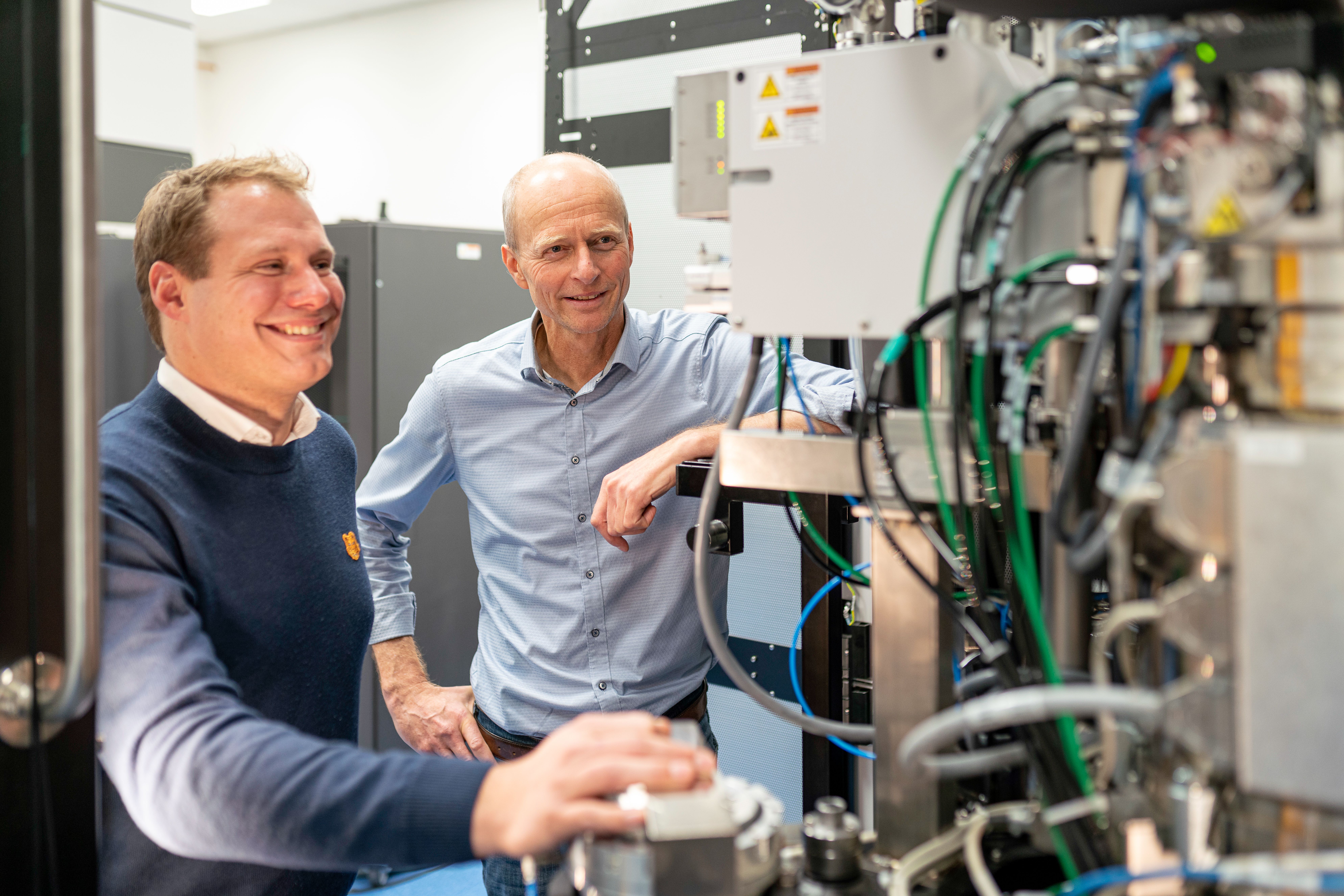Want to read more stories about Sioux Technologies? Download our digital magazine below.
Sioux Source‘The top of a technological roadmap.’ This is how Ruud Krijnen, system architect at Thermo Fisher Scientific, characterizes the Ultra-X. The maximum speed and sensitivity of a detection system for the company’s latest generation transmission electron microscope has been achieved. Sioux Technologies was involved in this exceptional technological achievement from the first development phase and started the pilot production of the module early 2021.
The Ultra-X detector is rewarded in the Guinness World Records book as the most sensitive X-ray detector on the planet. A great achievement and cooperation of the teams of Sioux & Thermo Fisher.
Thermo Fisher Scientific is world market leader in the development and construction of electron microscopes. In 2000, the company partnered with Sioux for the first time. Since then, Sioux has become a strategic partner within various R&D programs in the field of software development, system integration, electron optics and sample management. With the launch of the Ultra-X project, a new chapter in the cooperation started.
Accurate and sensitive
The Ultra-X is a detection system for the Spectra Ultra S/TEM, a high-end transmission electron microscope from Thermo Fisher Scientific. It works on the principle of energy-dispersive X-ray (EDX) spectroscopy. A sample is scanned with an electron beam down to atomic level. The interaction of the electrons with the material creates X-rays that are specific to the elements in the sample. The various atoms can be visualized to an accuracy of 50 picometres, including their characteristics. ‘With the Ultra-X, we are taking the ultimate step in this technology’, says Krijnen. ‘The module is five times faster than its predecessor and offers users the possibility of adjusting the measuring conditions in a single session. This makes it possible to analyse the most sensitive materials very precisely, even dynamically.’
Magnetic fields and vibrations
Thermo Fisher Scientific asked Sioux to take on the full development and manufacturing of the Ultra-X. Krijnen: ‘Thermo Fisher Scientific needs high-quality multidisciplinary suppliers and with this project Sioux was able to demonstrate what it can do. The kick-off of the project was in February 2018 and that started with concept formation; taking note of what was needed to make the product a reality.
‘The transmission electron microscope (TEM) from Thermo Fisher Scientific is an incredibly complex device’, says Marnix Tas, system architect at Sioux. ‘The vacuum is very deep, the magnetic fields are extremely strong and it is highly sensitive to vibrations. This leads to very specific and high technical requirements, for example regarding materials, precision mechanics and electronics. We tackled the development process together with Thermo Fisher Scientific by working on partial solutions in cross-functional teams of specialists. This led to the detailing of the Ultra-X and the construction of a prototype ready for use, within one and a half years. That is an achievement on itself and not just technologically. These kinds of projects are always risky and under high pressure. From the start, we said to each other that what we do is so complex that emotions and politics should not get in the way. That’s exactly how it turned out: the focus was always on good collaboration and achieving results.’
Upscaling
The second phase of the Ultra-X project concerned the industrialization and production. This was entirely in the hands of Sioux for a fixed price and timeline. Krijnen calls this phase at least as exciting as the development process. Tas agrees, stating that the complexity of the assembly of the system should not be underestimated. ‘Thermo Fisher Scientific expects us to deliver completely qualified modules. Guaranteeing good serial production requires, among other things, setting up an optimal cleanroom process, developing and building our own production machines, training people and managing the supply chain. In June 2021, the first Ultra-X beta module left our production facility and we are now working on optimizing our industrialization process so that we can scale up to a solid supply.’
Hot cakes
Krijnen: ‘The Ultra-X is of enormous added value to two important customer groups. First, there are companies in the semiconductor industry that can use this TEM technology for process optimization and control, for example, to set up new production lines faster and cheaper. In addition, TEM with Ultra-X offers new possibilities for materials researchers. This includes research for new batteries and space travel, and fundamental research into metals and other elements.
‘For the latter group of customers, the Ultra-X technology is a breakthrough that could win Nobel Prizes’, says Krijnen. ‘In fact, we are at the top of a roadmap; a faster and more sensitive EDX detection instrument does not exist, but there is plenty left to dream about. The previous generation of the module sold like hot cakes. The Ultra-X should be just as successful. Besides, we never have to complain about new ideas or a shortage of work here.’ ‘And for Sioux, it goes without saying that we want to take on more of these multidisciplinary development and manufacturing projects for Thermo Fisher Scientific’, Tas emphasizes. ‘In this way we lift our cooperation to a higher level.’
